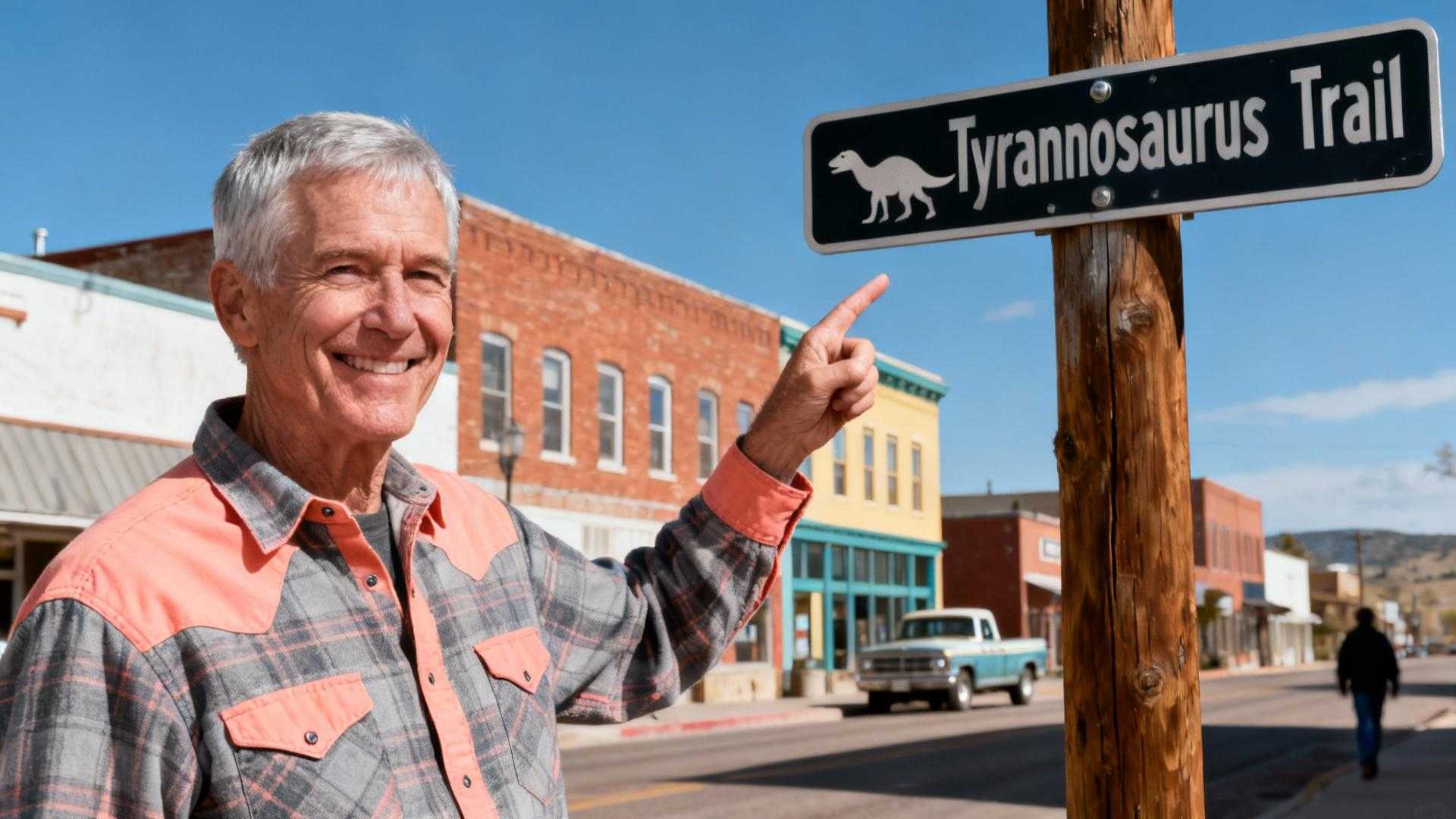Dawn breaks over U.S. Highway 40 where a roadside sign reads “Dinosaur, Colorado – Gateway to the Monument.” Most drivers speed past toward the fossil quarry two miles east. They remain unaware this 243-resident town literally changed its name in 1966.
What started as Artesia became America’s most paleontology-dedicated community through a civic decision locals still commemorate quietly. While 600,000+ annual monument visitors photograph Jurassic bones, residents maintain heritage celebrations that honor their town’s identity transformation. These traditions tour buses never stop to witness.
The Morning Artesia Became Dinosaur
January 1, 1966 marked the official transformation. The National Park Service had suggested the name change three years earlier. Local leaders believed connecting to Dinosaur National Monument would bring prosperity to their oil-boom town.
Artesia had been incorporated in 1947 with 281 residents. The town emerged during the 1940s oil rush near natural springs. By 1960, the population had grown to 318 hardworking ranchers and oil workers who called this remote corner of Colorado home.
Residents embraced their new identity with remarkable enthusiasm. Streets were renamed with dinosaur themes throughout the community. Brontosaurus Boulevard replaced Main Street while Stegosaurus Freeway marked the town’s northern boundary.
Heritage Rituals Residents Still Protect
Today’s 243 residents navigate daily life along Tyrannosaurus Trail and Antrodemus Alley. These dinosaur-themed street names function as constant reminders of their unique transformation story. Nearby communities maintain similar heritage traditions but none quite match Dinosaur’s literal identity shift.
Anniversary Traditions at Town Hall
Local gatherings honor the 1966 decision through modest celebrations. Longtime residents share stories about remembering Artesia’s oil-boom days. The town library preserves historical documents from both eras of their community’s existence.
The Monument Connection Locals Maintain
Residents developed a wry understanding of their situation over decades. “People come in and ask, ‘Where’s the museum? Where’s the skeletons?'” explains one local business owner. The Colorado side features geology while Utah holds the actual fossils.
A local saying emerged: “Utah has the bones, Colorado has the stones.” This phrase captures the community’s acceptance of their unique geographic reality.
What Happens at Dinosaur’s Fossil Festivals
Unlike commercialized dinosaur attractions elsewhere, Dinosaur maintains authentic community events. Small-scale celebrations focus on their town’s transformation rather than manufactured paleontology experiences. These free heritage events contrast sharply with expensive tourist destinations.
Summer Heritage Days
Families gather for modest exhibitions about their town’s history. Educational walks highlight the dinosaur street names and their origins. Junior programs teach children about both Artesia’s oil heritage and the 1966 transformation decision.
Local Food Traditions
Community potlucks feature western fare during heritage celebrations. Residents prepare beef steaks and game meats reflecting their ranching culture. These intimate gatherings preserve authentic small-town traditions without commercial interference.
The Pride 243 Residents Quietly Guard
Mayor Richard Blakley notes the population recently rebounded to about 315 residents. This growth stems from marijuana industry opportunities rather than dinosaur tourism. The promised prosperity from the 1966 name change never fully materialized as expected.
Despite population decline from a 2010 peak of 339 residents, the community maintains its chosen identity. Their persistence reflects quiet Western resilience rather than tourist-driven commercial success. This resistance to commercialization preserves authentic heritage over profit.
Your Questions About Dinosaur, Colorado Answered
When do locals celebrate the town’s 1966 renaming?
The official name change occurred January 1, 1966. Residents mark this date through informal gatherings rather than large festivals. Community events typically happen during summer months when weather permits outdoor activities.
How does Dinosaur town differ from the National Monument experience?
The monument receives over 600,000 annual visitors seeking fossil exhibits. Dinosaur town offers street names and local history rather than paleontology displays. Most tourists drive through en route to Utah’s fossil quarry without stopping.
What makes this town’s heritage events more authentic than commercial fossil attractions?
Dinosaur’s celebrations focus on their community transformation story rather than manufactured dinosaur experiences. Residents maintain traditions for themselves rather than tourist entertainment. This authenticity contrasts with commercialized paleontology attractions in neighboring areas.
Evening light gilds the sandstone cliffs where ancient rivers carved today’s landscape. The town that took dinosaurs’ name closes its library doors at 5pm. Tomorrow, residents will wake to their chosen identity—a heritage decision they honor through quiet, persistent pride.
